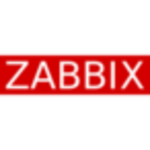If you talk about the Application Analytics, we have different systems, all kinds of integrations from the application space, I have so many systems to integrate. For business transactions, I have more than 20-25 systems. Without getting these analytics, where there are bottlenecks in the system, and where I see an issue, it's very difficult to track and debug.
If I spend a long time debugging an issue, I'll see more revenue loss; more bad customer experiences, which impacts my business’ revenue. What we do with the analytics, we have installed AppDynamics, instrumentation, and everything. At any point in time, if we want instrumented data, we just go back and take it, pull up the analytics, and see what it is throwing up. It's drilling down; showing snapshots of everything; bringing together different systems. It's really helping us. It's easy. It doesn’t take too much time and does not impact any performance on the servers. It's not too complicated of a system to understand. It's very easy, more readable to the users; just go over and grab the snapshots, and say, “Hey, here is the issue.” Just go over and fix it, drill down to see what is causing a problem.
Recently, it helped us discover some security issues, which now we see have been there for few years. There is a loophole in the security system. It was taking way too long. I've been running millions of transactions, and we were not able to discover it. But with AppDynamics, we just started monitoring. It simply brought our attention to analytics, saying “Hey, here it is. It's behaving weird.” We were able to drill down and we found a few servers that were behaving weird. We're able to develop a fix. There was previously no way to discover the issue. If it’s working fine, it’s working fine, but those few transactions were taking a long time.
It's really helping. We're so happy. That's why we want to understand, see how much further we can leverage it. It is not just the analytics, but how can we take it to the business; how can we turn this into a business-centric tool, as well as application monitoring. We have seen some of other vendors and it's really awesome.
As of right now, we are just going with demand-based monitoring, when there is an issue, a performance bottleneck or something. However, we are also exploring how we can set the continuous monitoring system, where we can get more of the analytics, see more of the long snapshots and see what the actual problems are and where, even if we're meeting customer experience very well, we can go beyond these customer expectations by improving some things. These analytics are helping us to build on those areas.
In the Business iQ, I don't know how much they’re trying to grab it, but we want to see more of the transaction, each and every area, from the users’ perspective to the end of the transaction, from the user to the network. There could be situations where the user is sitting in some other region, trying to access a system that is located in US data centres; there wasn't a problem from that. I want the transaction details from the data centre to the back end systems, and the back end systems to third-party integration. I should be able to correlate different transactions; all the pieces onto the dashboard, saying, “This is how it turns out.” That's what we are actually looking for.
We want a single monitoring tool. We don't want thousands in there because right now, I am discarding analytics monitoring tools. It's difficult to compare. Each tool has a different perspective but if you have a monitoring tool across everything, that’s where we see scope for improvement.
We want to explore more. We just started. We were on a different technology. We just started, so we want to explore it more and then see how it scales up.
It works as usual. I'll give an example. We have seen some other application monitoring systems from other vendors I won’t mention, where, as soon as we implement the monitoring system and start the application, the monitoring itself kills the performance, which is severe and so complicated in solutions. AppDynamics is just simple to put in. The agent shows a zero impact on the application servers, which we use Oracle. It's really good.
We've never used technical support, because it’s easy, super easy. We have reached out a few times just to understand more of how much we can use it, but not on the performance which AppDynamics is causing. There were misconceptions in the beginning that maybe it is causing a problem, but even after turning it off, the problem did not go away. We later realized it is not the problem. There were some interpretations about it later on, but it was pretty good.
We were previously using a different technology.
I was not involved in the setup. We have separate team for that. We are the architects. We requested they put it in the first place but there is an infrastructure team. They do the setup. The guidance which AppDynamics provided was really helpful.
I definitely would recommend AppDynamics. After looking at the snapshots, I think I see we're using less than 5-10% of what AppDynamics is capable of. I would definitely recommend exploring not just the analytics and the Business iQ, but I would also encourage you to show the network stats on the Business iQ, which is very important, very critical, and is very difficult to find out those things. Definitely those are really helpful.
We do not use any other AppDynamics solutions, but we were exploring the Business iQ at a recent AppDynamics conference. There was another application, End User Monitoring. I wanted to see that piece of it. It looks pretty interesting and I want to see how it takes.


















We have been able to reduce not only the number of monitoring applications in use (which saves us administration costs and dollars) as well as reduce our MTTR (89%) for one product. With the adoption of APM and AppDynamics, we've also seen a reduction in post-release client issues (68%) year over year, which translates to increased client satisfaction! More to come on this as the numbers continue to roll in.